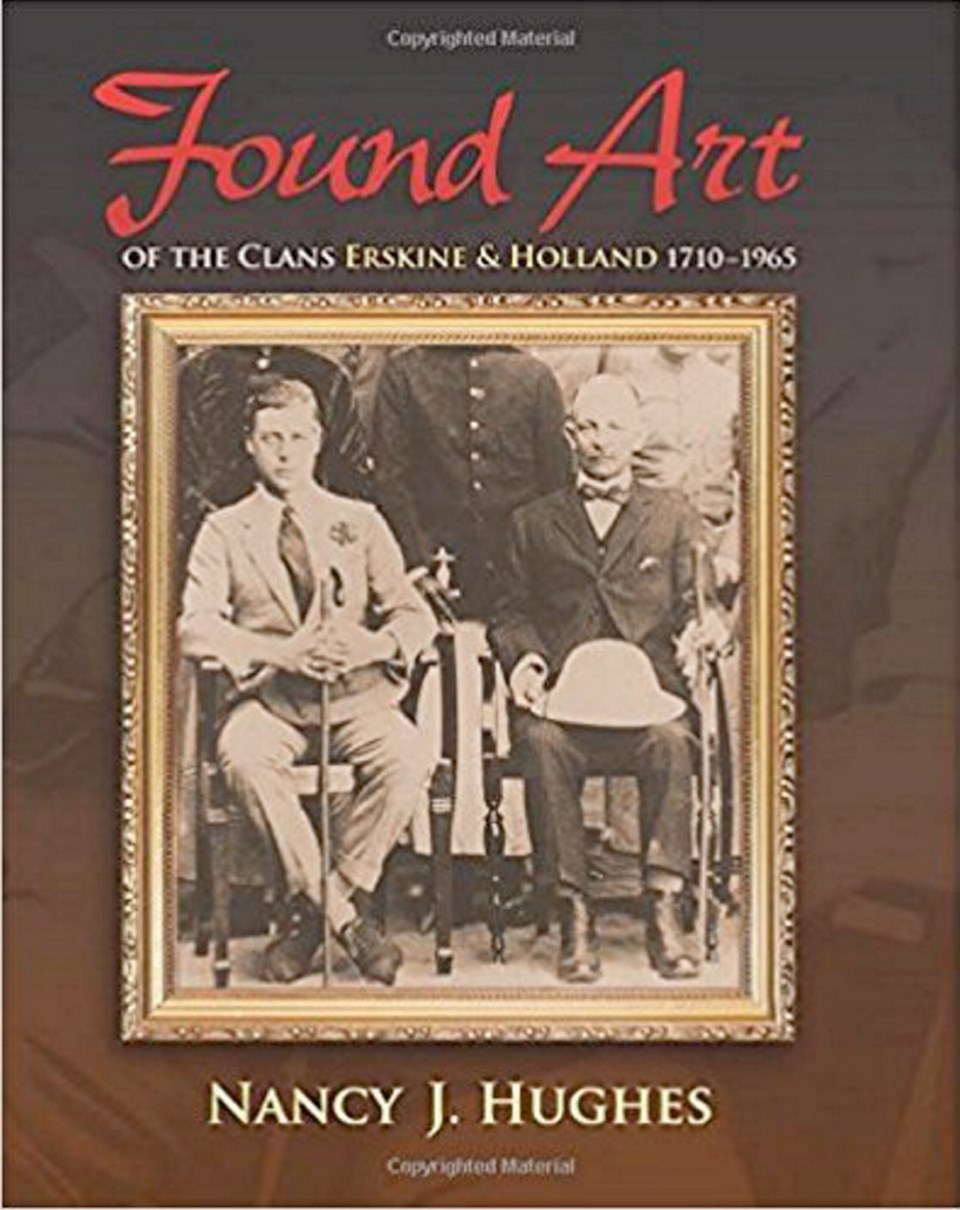Found Art of the Clans Erskine and Holland 1710-1965
By Nancy J. Hughes
Wildflower, 102 pages, $30
Family treasures, art from the 18th century, a distinguished clan from Scotland, retirement on Vancouver Island and Lund’s Auctioneers in Victoria. All of the elements we need, it seems, for a fascinating run through family history and the finest art.
These items were passed through the generations, but it took some quick action to ensure they would remain in the family’s hands in Victoria.
The Erskine family treasures came to Victoria with Sir Robert Erskine Holland when he moved here in 1937. When he died in 1965, the executors of his estate turned his collection — including books, family portraits, engravings, relics from India and much more — over to the auction house.
Sir Robert’s close friend, Margaret Nesbit, bought most of the items from Lund’s. When Nesbit died in 2010, she left them to Nancy J. Hughes, who set out to find out whatever she could about the collection.
This book, Found Art of the Clans Erskine and Holland 1710-1965, is the result of her resarch.
Hughes has Erskine ancestry, and as she traced the origins of the collection, she discovered that it had belonged to her own relatives. As a result, the collection has huge meaning for her — and it forms the basis for this fascinating look at a family history.
The story begins with Henry David Erskine, Lord Auchterhouse, Earl of Buchan and Lord Cardross. He died in 1767, and his wife Agnes Stuart died in 1778.
Their three sons were all notable, and Hughes has provided biographies of all of them. She has included portraits from a variety of sources, including the Queen’s own collection.
Found Art includes brief biographies of descendants through the generations, closing with that of Sir Robert, a noted diplomat at the time when the British Empire touched every corner of the world, and a friend of well-known people such as Mahatma Gandhi and author Rudyard Kipling.
This book can be seen as evidence of the benefits of self-publishing. No longer is self-publishing reserved for books that could not otherwise find a publisher; today, these books can give the author much more creative control, and in the right hands, can result in a book that is of much higher quality.
Found Art is a fine example of that. All of the art that was in colour is reproduced in colour here. Would a conventional publisher have done that, and kept the price at $30? Doubtful.
Hughes has written about her family history before. Her previous book was about the construction company founded by her grandfather, Walter Luney, who was responsible for many notable buildings in Greater Victoria.
One complaint: Readers would have been better served if a couple of pages had been devoted to a family tree, a chart that would have shown the line of descent of the Erskines, as well as indicating the relationship between the Hollands, the Erskines and the author. That would have provided a continuous thread to link together the stories about people, paintings and collectibles.
Found Art reaches far into the past, three centuries ago. It connects two great families from England and Scotland with modern-day Victoria, a reminder of some of the strong ties that are still there, but less evident than before.
Now that she has revealed all about the Erskine and Holland collection, what will become of it? Hughes says that she would like to send it back to a museum or university in England or Scotland.
Her book is a fine way to explain to those organizations the significance of the items gathered by the clans Erskine and Holland. And it’s a good read for the rest of us as well.
The reviewer is the editor-in-chief of the Times Colonist.



